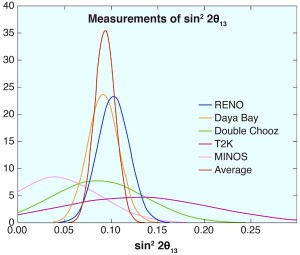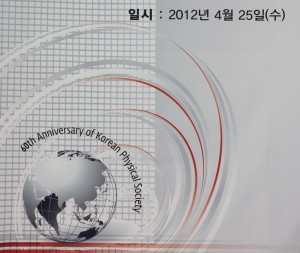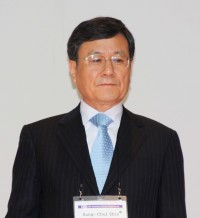Many of us who are involved in ILC design efforts were in South Korea for the KILC12 workshop in May in Daegu. Wearing a different hat as past president of the American Physical Society, I was also invited to participate in the celebration of the 60th anniversary of the Korean Physical Society in Daejean. That event was particularly impressive because it served both as a celebration of the amazing recovery of the country since the devastation of the Korean War and as a recognition of their impressive progress in science and technology. The Korean Physical Society was created by a very small group of physicists in Busan in the midst of the Korean War, and from that fledgling organisation it has become a strong and thriving physical society.
South Korea is a charter member of the global effort towards a linear collider and was one of the countries that came together to create the Global Design Effort. Ever since the technology decision to base the ILC design on superconducting radiofrequency cavities, South Korea has continued to be strongly represented on our various oversight committees: FALC (Funding Agencies for Large Colliders), ICFA (International Committee for Future Accelerators) and ILCSC (International Linear Collider Steering Committee). South Korea has contributed to our common fund and has been the host for a number of our most important meetings and workshops.

The recent measurements of the much sought-after mixing parameter, θ{sub}13{/sub} , for electron neutrino oscillations. Image: APS/Carin Cain
In recent years, Korea has developed a significant effort in particle physics, now having particle physics groups in several Korean universities. For the Large Hadron Collider, they have contributed detector hardware and are deeply involved in the physics data analysis from the initial physics runs. Especially noteworthy is the recent result from a reactor neutrino experiment, RENO, in South Korea that confirmed the announcement from the Daya Bay experiment in China of a larger-than-expected value for the neutrino mixing angle θ13. The Daya Bay result and the RENO confirmation has created considerable excitement in the neutrino and broader particle physics communities because the large reported value makes future neutrino physics more accessible, including the possibility of observing charge parity violation with neutrinos.
The investments in physics in South Korea go well beyond particle physics and include the Pohang Light Source, a Rare Isotope Accelerator Project in Daejean, the High Flux Advanced Neutron Application Reactor (HANARO) and others. The Korean physics community is growing in both size and stature. Korean scientists are publishing increasingly in the most prestigious journals in the world while at the same time the South Korean journals are themselves gaining in stature.
At the 60th anniversary celebration, Professor Sung-Chul Shin, President of the Korean Physical Society, gave a very uplifting speech summarising the progress and status of physics in Korea and presented an ambitious vision for the future. I reprint below the English translation he provided:
Commemorative Speech for the 60th Anniversary of the Korean Physical Society
Good afternoon, members of Korean Physical Society and distinguished guests. I am glad to be part of this ceremony in honor of the 60th anniversary of KPS. I would especially like to thank presidents of physical societies and physicists who came to celebrate this meaningful ceremony from countries all over the world.
KPS was established in Busan, December 7th 1952 during the Korean War. Sixty years ago, Korea was the poorest and most hopeless country in the world due to the war. The United Nations representatives said, “Expecting Korea’s reconstruction is like expecting a rose to come into bloom in a garbage can” while visiting Korea right after the war. KPS was established upon 34 physicists’ noble spirit of planting roots of physics for the realization of a scientifically advanced country despite the difficult conditions of the nation. Now we, physicists, can work in a terrific environment thanks to those pioneer physicists who planted solid roots of physics in Korea.
It takes three generations for a country to blossom in science. The first generation is science taking root, the second generation is the tree of science growing and the third generation the science blossoms and bears fruits. This is the time for the Korean physics communities to enter the third generation and the science to blossom, considering one generation of academia as being 30 years. In this respect, I would like to make this year of the 60th anniversary as the beginning year to advance KPS into the top 5 world physical societies. KPS has become the representative academic society by achieving quantitative and qualitative growth over the last 60 years. A society that started 60 years before with 34 members has grown into the only society in Korea that publishes 4 journals, including 2 SCI journals with 14,000 members. It became possible by great leadership of 23 former presidents and members’ dedication and passion. I would like to express my deepest appreciation for their achievements.
Now, it is the time to spread our wings to become one of the world’s renowned societies, utilizing 60 years of experience as a platform. To this end, I would like to take this opportunity to jump into the world by carrying out various projects commemorating our 60th anniversary.
First, the 2012 spring meeting is upgraded to an international conference celebrating 60 years of KPS with distinguished overseas and domestic physicists. We will realize the globalization of PS through scholarly cooperation with APS, JPS, JAPS, CPS and TPS.
Second, we will hold the ICM 2012 in Busan, the beginning place of KPS, this July. ICM is the largest and most prestigious international conference in the field of magnetism which has been held every three years, and Korea hosts it for the first time after 50 years from formation. Over 2,000 scholars from 54 countries, including 3 Nobel laureates, Andre Geim (2010) Albert Fert (2007) and Klaus von Klitzing (1985), will participate in the conference and this will be a big opportunity to enhance the reputation of KPS.
Third, we will establish an information system at the international level through epochal improvement. The new information system will take the form of cloud computing which provides enhanced security, accessibility, serviceability and scalability.
Fourth, we will prepare an efficient administration system by adopting new governance system appropriate for the scale of KPS. Considering the scale and diverse activities of KPS, the current centralized governance system needs to be converted into a decentralized system. We created four new positions of functional vice presidents for the settlement of a decentralized system and amended the articles of association.
Fifth, we would like to make the 60th commemorative book. It will be a precious historical source recording KPS’s 10 years of achievements following the 50th commemorative book.
I was honoured to participate in this inspiring event as a physics colleague and as Past-President of the American Physical Society. The transformation of South Korea into a modern advanced society is surely the reward of the hard work and dedication of the Korean people, and they have received an important boost from their embracing science and technology, both for its intrinsic benefits, and as an engine to drive the economics of the country through manufacturing. I congratulate our Korean colleagues, and we all look forward to long and productive collaborations on the physics frontiers of the future.




Recent Comments